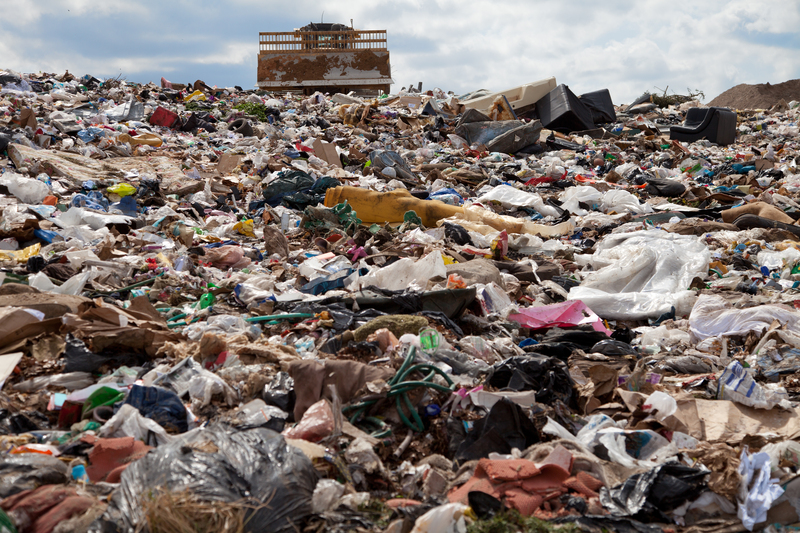Polystyrene Recycling: Environmental Gains
Polystyrene, a versatile plastic commonly referred to as Styrofoam, is widely used in the packaging industry due to its lightweight, insulating, and cushioning properties. Despite its utility, polystyrene has been at the center of environmental concerns as it is notoriously difficult to recycle and can persist in the environment for hundreds of years. This has led to a significant amount of polystyrene waste accumulating in landfills and oceans. However, advancements in recycling technologies hold promise for mitigating this issue. This article explores the environmental gains of polystyrene recycling and highlights the innovative solutions that are emerging.
The Challenge of Polystyrene Waste
Polystyrene waste poses a substantial environmental challenge. Due to its lightweight nature, it often escapes traditional waste management systems and can be found littering landscapes and waterways. Unlike other plastics, polystyrene is not readily biodegradable, leading to long-term pollution. Additionally, polystyrene foam takes up significant space in landfills, contributing to the solid waste crisis. When it does degrade, it breaks into smaller particles, known as microplastics, which can be ingested by marine animals and enter the food chain, potentially causing harm to human health.
Despite these challenges, the global production of polystyrene continues to rise, driven by its demand in packaging, insulation, and disposable foodservice products. Addressing the environmental impact of polystyrene requires effective waste management strategies, and recycling is a key component of this approach.

Innovative Polystyrene Recycling Technologies
Recycling polystyrene has traditionally been challenging due to its lightweight and voluminous nature, which reduces its economic viability for collection and transportation. However, recent technological advancements are making polystyrene recycling more practical and efficient.
Mechanical Recycling
Mechanical recycling is one of the most common methods for recycling polystyrene. This process involves collecting and shredding waste polystyrene, which is then melted and reformed into new products. Although this method is straightforward, it has limitations. Contaminants and mixed polymer wastes can degrade the quality of the recycled polystyrene, restricting its use to lower-value products.
Chemical Recycling
Chemical recycling offers a more sustainable solution by breaking down polystyrene into its monomer components through processes such as pyrolysis or depolymerization. These monomers can then be purified and polymerized into new, high-quality polystyrene. Chemical recycling not only addresses the contamination issue but also allows for an infinite recycling loop, as the recycled polystyrene retains the same properties as virgin material. Companies like Agilyx and Polystyvert are pioneering in this field, developing scalable technologies that promise to revolutionize polystyrene recycling.
Environmental Benefits of Polystyrene Recycling
The recycling of polystyrene presents several environmental benefits, which can help mitigate pollution and conserve natural resources. Some of these gains include:
Reduction in Landfill Waste
Recycling polystyrene significantly reduces the amount of waste sent to landfills. Polystyrene takes up considerable landfill space and, due to its non-biodegradable nature, remains in landfills for hundreds of years. By recycling polystyrene, we can divert this waste from landfills, freeing up space for other wastes and reducing the need for new landfill sites.
Decreased Litter and Ocean Pollution
Polystyrene is a major contributor to litter and marine pollution due to its lightweight and buoyant properties. By improving recycling rates, we can reduce the amount of polystyrene waste that ends up in natural ecosystems. This has a direct positive impact on wildlife, particularly marine animals that can ingest polystyrene debris, leading to injury or death.
Conservation of Resources
Manufacturing polystyrene from recycled materials requires less energy and resources compared to producing virgin polystyrene. Fossil fuels, primarily oil and natural gas, are the main feedstocks for polystyrene production. Recycling polystyrene reduces the demand for these non-renewable resources, conserving energy and reducing greenhouse gas emissions associated with their extraction and processing.
Economic Benefits
The growth of the polystyrene recycling industry can create economic opportunities and jobs in the recycling sector. It can also lead to cost savings for manufacturers who use recycled polystyrene, as it can be less expensive than virgin materials. This economic incentive can drive further investment in recycling infrastructure and innovation.
Case Studies and Success Stories
Several municipalities and companies have successfully implemented polystyrene recycling programs, demonstrating the feasibility and environmental benefits of these initiatives. For instance, Dart Container Corporation has established drop-off locations and mail-back programs for polystyrene recycling, making it convenient for consumers to recycle their waste. Similarly, the city of Los Angeles has integrated polystyrene recycling into its waste management system, resulting in significant reductions in landfill waste.
In Europe, the initiative PolyStyreneLoop is leveraging chemical recycling to create a closed-loop system for polystyrene insulation materials. This project not only addresses the recycling of polystyrene but also deals with the safe removal of harmful flame retardants, showcasing a holistic approach to sustainability.

Challenges and Future Directions
While polystyrene recycling has made significant strides, several challenges remain. One of the main challenges is the economic viability of recycling processes. Collection, transportation, and processing costs can be high, especially in areas where polystyrene waste is dispersed. Additionally, public awareness and participation in recycling programs are crucial for their success. Without proper education and incentives, consumers may continue to dispose of polystyrene waste improperly.
Future directions for polystyrene recycling include developing more efficient and cost-effective recycling technologies, expanding collection infrastructure, and fostering partnerships between government, industry, and consumers. Policies that mandate or incentivize recycling, such as extended producer responsibility (EPR) programs, can also play a critical role in driving the adoption of polystyrene recycling.
Conclusion
Polystyrene recycling offers substantial environmental gains, from reducing landfill waste and ocean pollution to conserving resources and decreasing greenhouse gas emissions. While challenges persist, advancements in recycling technologies and successful case studies provide hope for a more sustainable future. By continuing to innovate and invest in polystyrene recycling, we can make significant strides in mitigating the environmental impact of this widely used material. Public engagement, supportive policies, and industry collaboration will be key to realizing the full potential of polystyrene recycling and achieving a circular economy for plastics.


